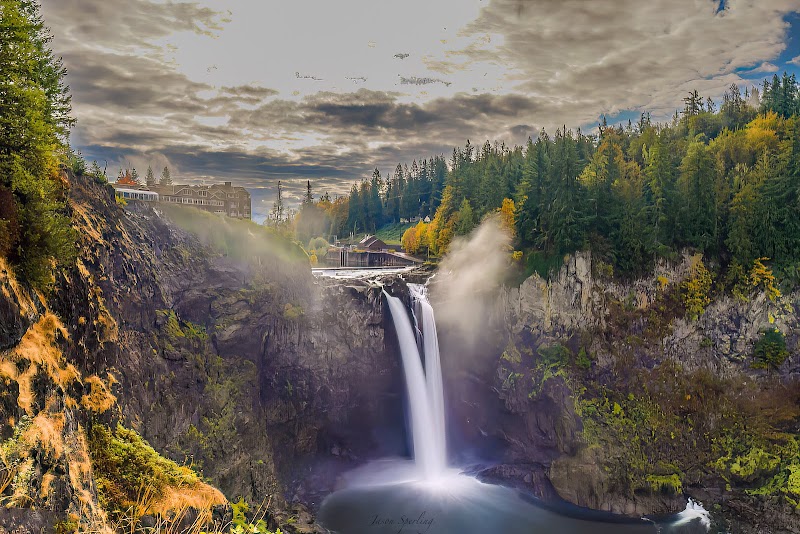Essential Vehicle And Comfort Tips For A Two-Hour Boat Adventure
Embark on a two-hour boat adventure from Seattle’s surrounding waters, where every moment is shaped by water’s push and pull. This guide covers vehicle options and comfort essentials, equipping you for a practical, enjoyable trip that balances excitement with clear safety and preparation tips.
Select The Right Boat For Your Skill Level
Match the boat type—kayak, canoe, motorboat—to your experience and water conditions to ensure safety and enjoyment.
Bring Layered, Quick-Dry Clothing
Water and wind temperatures fluctuate; dressing in versatile layers prevents discomfort and chills on the water.
Keep Hydration Within Reach
Store water bottles somewhere accessible to stay hydrated without interrupting your rhythm on board.
Wear Footwear With Grip
Non-slip shoes reduce the risk of falls on wet boat surfaces, crucial when boarding or disembarking.
Essential Vehicle And Comfort Tips For A Two-Hour Boat Adventure

Self-Driving Two Hour Rental
Starting at $270
Discover Miami’s stunning waters with a self-driving boat rental from Miami Rent Boats. Perfect for groups, this two-hour experience delivers unforgettable views and fun on the water—safely guided and easy to book. Keep reading to find out why this activity is a standout choice in Miami’s outdoor scene.
A two-hour boat adventure invites you to engage directly with water’s restless energy—currents nudging the hull and waves chasing your bow. To fully enjoy this compact yet invigorating journey, your vehicle choice and comfort essentials shape both experience and safety.
Choosing Your Boat: Powerboats, kayaks, canoes, or small sailboats each offer distinct rhythms. For a short cruise across calm lakes or slow rivers, a small motorboat provides speed and shelter but requires fuel consideration and docking ability. Kayaks and canoes connect you with nature’s pulse more intimately—they demand physical effort and skill but reward with access to narrower channels and quieter spots. Assess water conditions, your skill level, and group size before deciding.
Seating and Ergonomics: Your seat is the foundation of comfort. Firm, supportive, yet cushioned seating guards against fatigue. On rigid boats, bring portable cushions or padded seat covers. Consider back support especially if waters are choppy—persistent bouncing drains energy and dulls focus.
Clothing Considerations: Dress in layers that breathe and dry quickly. Temperatures can shift abruptly once you’re on water, with wind cutting through even the warmest days. A waterproof windbreaker, sun-protective hat, and polarized sunglasses shield from glare and weather. Footwear should be sturdy with non-slip soles—wet surfaces turn slick without warning.
Essential Gear and Packing: Water bottles must be easily accessible. Hydration fuels alertness, crucial for holding the helm or paddles steady. Pack snacks for quick energy, but in waterproof containers to keep them dry. Store small essentials like sunscreen, insect repellent, and first aid kits in secured compartments or dry bags.
Timing and Route: A two-hour window offers manageable distances—typically 5 to 10 miles depending on your boat and water conditions. Plan for steady pace and allow buffer time to navigate currents that dare to push you off line. Early morning or late afternoon trips reduce sun exposure and often find waters calmer, enhancing both comfort and photo opportunities.
A two-hour boat adventure asks you to respect water’s untamed temperament but rewards with dynamic views and refreshing pace. Proper vehicle selection aligned with comfort preparedness lets you lean into the wild water’s challenge with confidence and ease.
Nearby Trips
All Adventures
Boat Charters
Water Activities
Adventures near Seattle
Discover the unique and memorable adventures that make Seattle special.
Frequently Asked Questions
What type of boat is best for a two-hour adventure on Seattle waters?
Depending on your skill, a motorboat offers speed and shelter for casual outings, while kayaks and canoes offer intimate exploration of bays and inlets but require paddling stamina.
How should I prepare for sudden weather changes during the trip?
Bring waterproof and wind-resistant clothing layers, keep an eye on real-time forecasts, and carry emergency gear like a whistle and phone in a dry bag.
Is it necessary to bring food and water for such a short trip?
Yes—staying hydrated and energized matters even on a short outing. Plan for at least one liter of water and quick snacks to maintain energy.
Can I use my personal vehicle to tow a boat for this trip?
Ensure your vehicle has the proper tow rating and hitch equipment. Check local regulations for parking and launching spots around Seattle’s waterways.
Are there local wildlife encounters I should be prepared for?
Look out for seals, herons, and occasionally otters, who share these waters. Maintain respectful distance and avoid sudden movements to observe without disturbing.
Where are good places to launch boats near Seattle for a two-hour trip?
Shilshole Bay Marina and Lake Union offer easy access points with ample facilities, ideal for short trips on Puget Sound or surrounding lakes.
Recommended Gear
Personal Flotation Device (PFD)
A properly fitting PFD is mandatory for safety on any watercraft.
Waterproof Dry Bag
Protects valuables, electronics, and snacks from water exposure.
Polarized Sunglasses
Reduces glare and improves visibility on reflective water surfaces.
Layered Clothing
Helps regulate temperature and keeps comfort against wind and spray.
Local Insights
Hidden Gems
- "Discovery Park's hidden coves accessible by kayak for quiet wildlife spotting"
- "Shoreline salt marshes that harbor migratory birds in spring and fall"
Wildlife
- "Harbor seals lounging on rocks"
- "Great blue herons stalking fish near the shorelines"
- "Occasional orca sightings in Puget Sound"
History
"Seattle’s waterways played a crucial role in indigenous trade and travel, with sites near Lake Union marking historical fishing villages."
